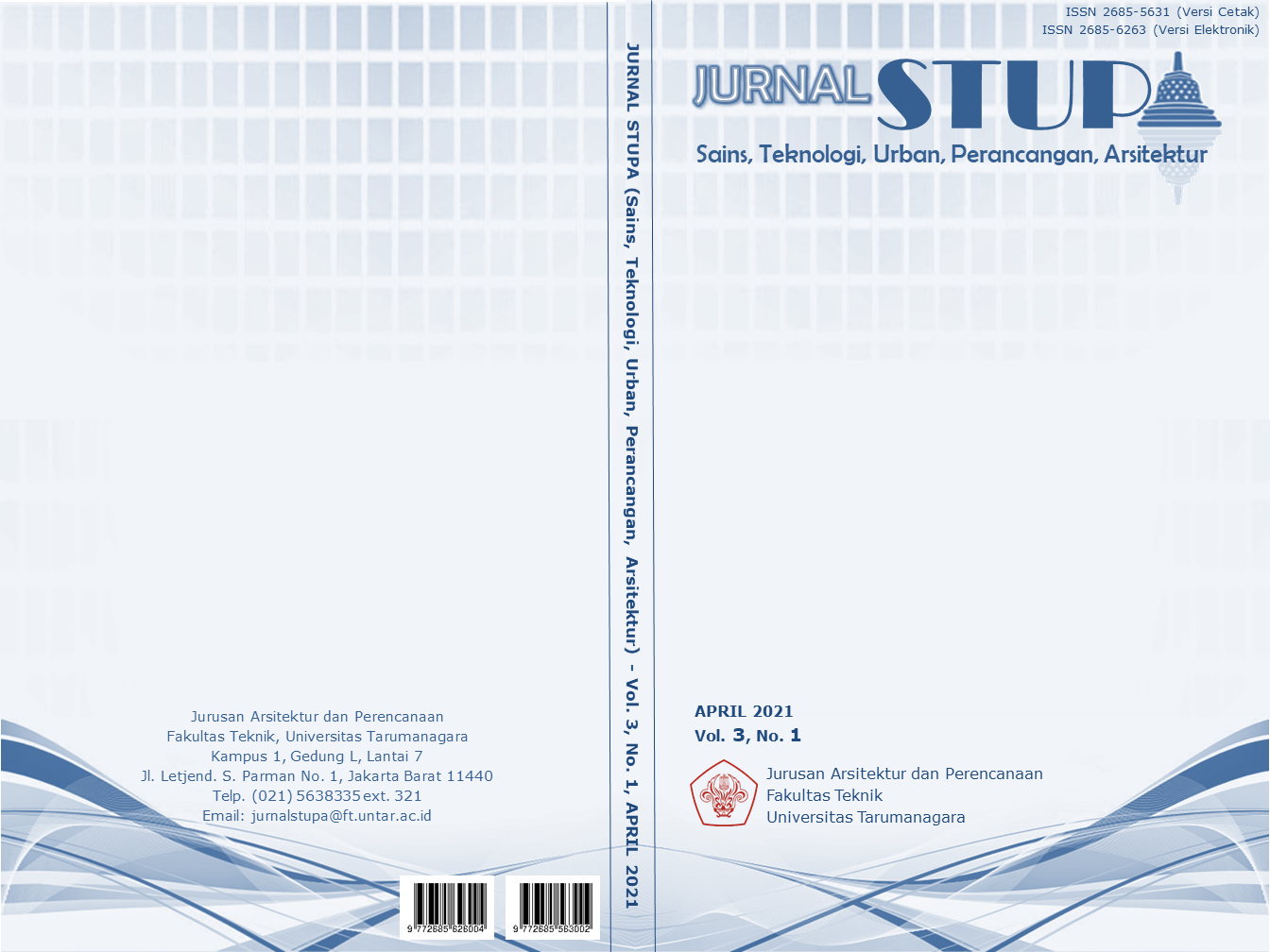SATU UNTUK TIGA : HUNIAN MULTIGENERASI
Isi Artikel Utama
Abstrak
Keywords : group of age; multigeneration; safe interaction; shared space; social isolation
Abstrak
Berhuni merupakan salah satu bentuk kegiatan manusia secara sadar yang esensial. Bentuk, estetika, dan organisasi lingkungan binaan semuanya menjadi bagian dari bagaimana seseorang tinggal. Konsep berhuni memiliki kaitan yang erat dengan waktu dan ruang. Oleh karena itu, konsepnya akan tergeser atau digantikan sesuai dengan fenomena yang terjadi pada kurun waktu yang dimaksud. Sama hal nya yang kita rasakan saat ini yaitu adanya COVID – 19. Protokol kesehatan yang baru digalakan seperti sosial isolation dan menimbulkan efek domino. Kegiatan outdoor harus dilakukan di dalam hunian sehingga menyebabkan hunian memerlukan tempat untuk menampung kebutuhan baru tersebut. Hal ini juga menimbulkan masalah baru dengan adanya kelompok usia yang bervariasi pada satu keluarga. Dengan tujuan menciptakan ekosistem keluarga dalam satu hunian berdasarkan isu terhadap social isolation yang mengganggu cara berinteraksi, maka diterapkan metode Architectural Programming (Cherry, 2009) dan poin dari MASS : Designing senior housing for safe interaction (2020). Penerapan metode ini kemudian menghasilkan program yang sesuai dengan kebutuhan setiap kelompok usia dalam suatu keluarga, serta memperhatikan isu awal yaitu social isolation. Satu untuk Tiga : Hunian Multigenerasi merupakan konsep berhuni shared space yang baru dengan menyatukan kebutuhan tiga generasi dan memperhatikan poin safe interaction in social isolation. Selain itu, . Satu untuk Tiga : Hunian Multigenerasi tetap mempertahankan nilai kemandirian dan identitas pada segala usia.
Rincian Artikel
Referensi
Cherry, E. (1999). Programming for Design. New York: John Wiley & Sons, Inc.
Norberg-Schulz, C. (1985). Christian The Concept of Dwelling : On the way to figurative architecture. New York: Rizzoli International Publications, Inc.
Schultz, Chiristine, Heiddegers. (2002). Thinking in Architecture. Memar Publisher, No 12.
Olgyay, V. W. (1980). Definitions of dwelling, Bachelor of Science in Environmental Design. Antioch University. Ohio: Yellow Springs.
Shidfar, S. The Difference Between Dwelling And Home In Architecture. College of Architecture And Urban Design, Iran University Of Science And Technology Toronto, Ontario, M2N7B2, Canada
Sun, X., Lucas, H., Meng, Q., & Zhang, Y. (2011). Associations between living arrangements and health-related quality of life of urban elderly people: a study from China. Quality of life research : an international journal of quality of life aspects of treatment, care and rehabilitation, 20(3), 359–369. https://doi.org/10.1007/s11136-010-9752-z



